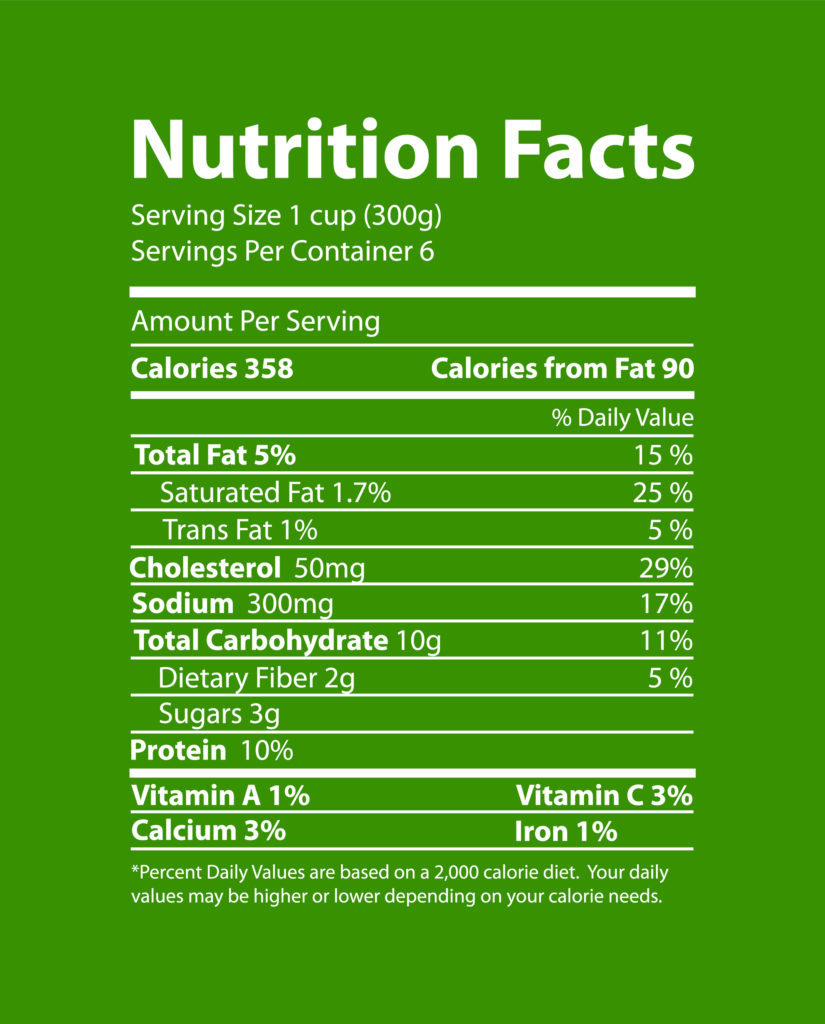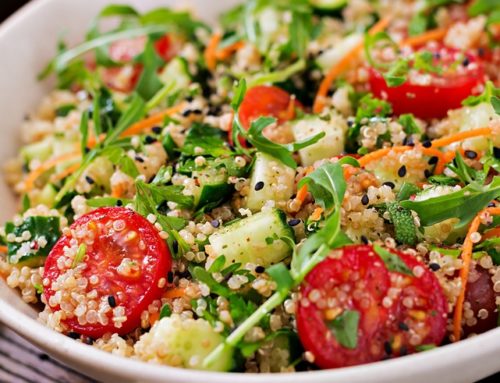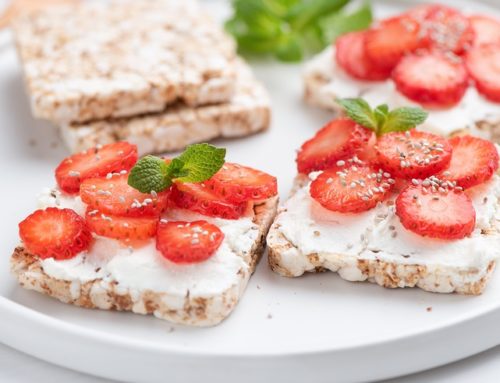Eating plenty of fiber is important for a variety of reasons—from keeping you full between meals, to promoting a healthy balance of gut bacteria, to reducing the risk of colon cancer. But it can seem like an impossible task to get in the recommended 25 grams per day for women and 38 grams for men. Check out these simple tips to help you get there!
Eat plenty of plants. Plant foods like fruits, vegetables, and legumes (beans, nuts, and seeds) are naturally high in fiber. Try to get in at least five servings per day – but more is even better!
Swap out your white bread with whole wheat. A standard piece of white sandwich bread contains just 1 gram of fiber. Whole wheat bread boasts double that amount. So, replacing your sandwich bread all week with the higher-fiber whole wheat option would add almost 15 grams of fiber to your week! Just be sure to check the ingredients list for the words “whole wheat” or “whole grain”. Extra credit: add high-fiber veggies like lettuce, tomatoes, sprouts, cucumbers, or onions to your sandwiches, too.
Choose brown rice. A 1/3 cup serving of brown rice has 1 gram of dietary fiber, versus the measly 0.2 grams you get from the same amount of white rice. Brown rice also contains more protein and other essential vitamins and minerals than white rice. Not a brown rice fan? Try another high-fiber, high-protein grain like quinoa instead.
 Pump up your cereal bowl. A quick survey of nutrition facts labels in the cereal aisle is enough to make your head spin. But one thing is clear: not all cereals are created equal. While some highly processed varieties contain next to no fiber, others contain upwards of 8 grams per cup. Expert tip: You can find dietary fiber listed on the Nutrition Facts Panel under Total Carbohydrates. While you’re there, make sure to take a peek at the sugar content as well. Anything over 4-6 grams per cup should go back on the shelf.
Pump up your cereal bowl. A quick survey of nutrition facts labels in the cereal aisle is enough to make your head spin. But one thing is clear: not all cereals are created equal. While some highly processed varieties contain next to no fiber, others contain upwards of 8 grams per cup. Expert tip: You can find dietary fiber listed on the Nutrition Facts Panel under Total Carbohydrates. While you’re there, make sure to take a peek at the sugar content as well. Anything over 4-6 grams per cup should go back on the shelf.
Give your smoothie a boost. Yes, those veggies and fruits you blend up have plenty of fiber on their own – but you can do even better! Add a tablespoon of ground flax, or a teaspoon of acacia powder and you’ll get an extra 2 grams of fiber in your shake. These add-ins not only give you a strong start towards meeting your daily fiber goal, but also add valuable nutrients like omega-3 fatty acids to your diet.
When all else fails, add chia seeds. These tiny seeds contain a whopping 6 grams of fiber per tablespoon, plus 2 grams of protein, and plenty of other essential vitamins and minerals. They can easily be added to common foods like yogurt, smoothies, oatmeal, or fruit. Because they expand when moistened, they can also be used to make things like jam and puddings that pack a high-fiber punch.
Does getting your recommended daily dose of fiber seem more within reach? Try these simple swaps in your meals, and taste how easy it can be!





